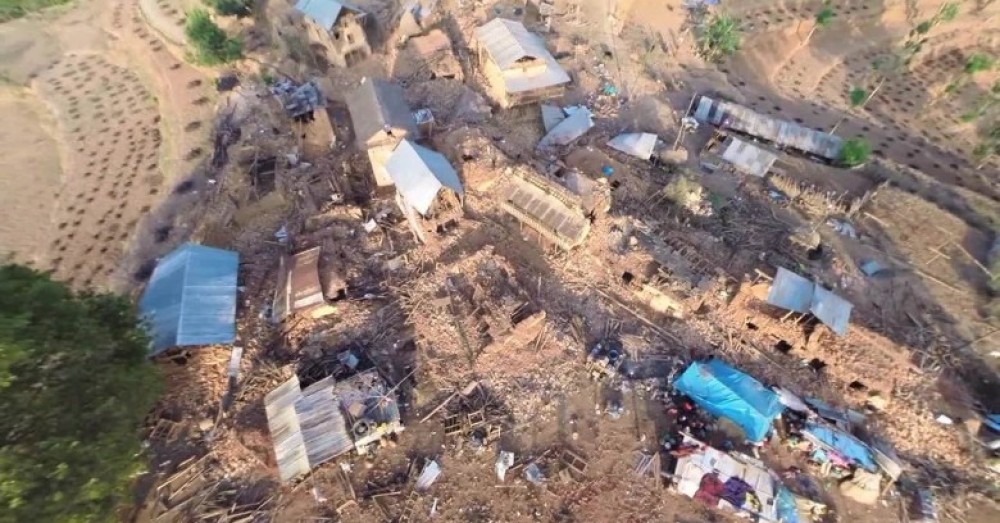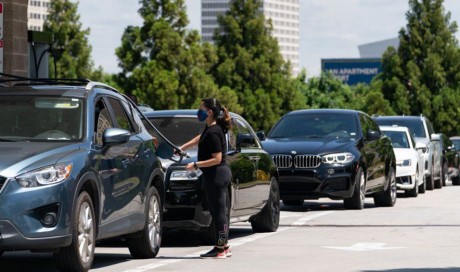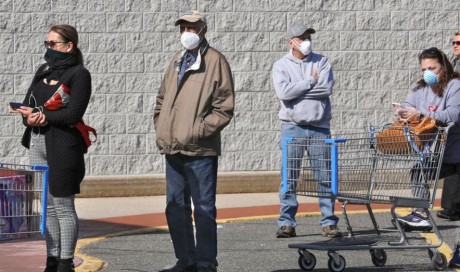A 7.4 magnitude earthquake that hit Mexico's southern coastline on Tuesday, collapsing buildings and prompting evacuations, has left at least five people dead, officials said.
The earthquake occurred at 10:29 a.m. local time (11:29 a.m. ET), with an epicenter 6.8 miles southwest of Santa María Zapotitlán in Oaxaca state, near El Coyul.
At least five people were killed, according to the coordinator for Mexico's National Civil Protection Service.
Oaxaca state Gov. Alejandro Murat said a 22-year-old woman and a man were among the dead.
The Oaxacan Health Services also reported damages from the quake to general hospitals in Pochutla, Puerto Escondido and Pinotepa Nacional and a few community hospitals in other areas. According to Murat, two of the hospitals with damages have been dealing with coronavirus patients.
"We are verifying [damages] because this hospital is also tending Covid cases on the Oaxacan coast," he said on a radio interview with Radio Fórmula. The severity of the damages are not specified.
The National Civil Protection Service reported the first death after a structure collapsed after the earthquake, which occurred just east of the popular tourist destination Huatulco.
Authorities also reported a power outage throughout the state's capital and damages to the exterior of a hospital in Oaxaca.
The earthquake could be felt as far as Guatemala, Honduras and El Salvador. In capital Mexico City, approximately 190 miles north of the epicenter, tremors were felt and sirens were heard wailing.
A policeman stands in front of a partially collapsed building after an earthquake in Oaxaca, Mexico.
Tsunami waves of 0.68 meters (2.2 ft) were observed in Acapulco and 0.71 meters (2.3 ft) in Salina Cru. An earlier tsunami warning was revised down, according to the US Tsunami Warning System, forecasting possible waves of up to a meter (3.3 ft).
The damage in Oaxaca state is considered light to moderate, according to the US Geological Survey (USGS) ShakeMap.
Estimates modeled by the USGS suggest that localized casualties and damage are possible but there are likely to be fewer than 100 fatalities and less than $100 million in damage. However, the model only includes earthquake shaking, and not any impacts from potential tsunamis on the coastline.
The USGS said that recent earthquakes in the area have caused secondary hazards such as tsunamis and landslides.
Earlier estimates put the magnitude of the earthquake at 7.7, but that has been revised down to 7.4 (and additional revisions are possible).
Mexico is one of the world's most seismically active regions and has a long history of devastating earthquakes. The country is located on top of three large tectonic plates and their movement causes regular quakes and occasional volcanic eruptions.
In 2017, two powerful earthquakes hit the country in two weeks, toppling buildings, cracking highways and killing hundreds of people. One had a magnitude of 7.1 and the other a magnitude of 8.1.
Mexico City is particularly vulnerable to earthquakes because its very soft and wet ground amplifies shaking and is prone to liquefaction, in which dirt transforms into a dense liquid when sufficiently churned.
Share This Post















